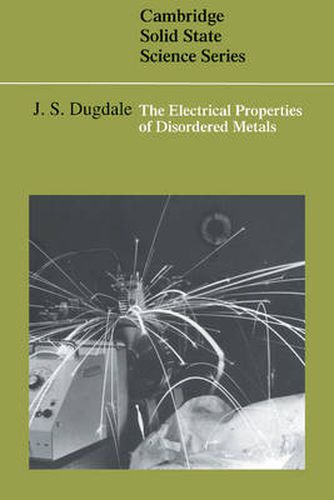Readings Newsletter
Become a Readings Member to make your shopping experience even easier.
Sign in or sign up for free!
You’re not far away from qualifying for FREE standard shipping within Australia
You’ve qualified for FREE standard shipping within Australia
The cart is loading…






The theory of how metals conduct electronically has, until recently, been confined to metals that are crystalline with the constituent atoms in regular arrays. The discovery of how to make solid amorphous alloys led to an explosion of measurements of the electronic properties of these new materials, and the emergence of a range of interesting low temperature phenomena. The book describes in physical terms the theory of the electrical conductivity, Hall coefficient, magnetoresistance and thermopower of disordered metals and alloys. The author begins by showing how conventional Boltzmann theory can be extended and modified when the mean free path of the conduction electrons becomes comparable with their wavelength and interionic separation. The consequence of this is explored and the theory tested by application to experimental data on metallic glasses. Designed as a self-contained review, the book will appeal to non-specialist physicists, metallurgists and chemists with an interest in disordered metals.
$9.00 standard shipping within Australia
FREE standard shipping within Australia for orders over $100.00
Express & International shipping calculated at checkout
The theory of how metals conduct electronically has, until recently, been confined to metals that are crystalline with the constituent atoms in regular arrays. The discovery of how to make solid amorphous alloys led to an explosion of measurements of the electronic properties of these new materials, and the emergence of a range of interesting low temperature phenomena. The book describes in physical terms the theory of the electrical conductivity, Hall coefficient, magnetoresistance and thermopower of disordered metals and alloys. The author begins by showing how conventional Boltzmann theory can be extended and modified when the mean free path of the conduction electrons becomes comparable with their wavelength and interionic separation. The consequence of this is explored and the theory tested by application to experimental data on metallic glasses. Designed as a self-contained review, the book will appeal to non-specialist physicists, metallurgists and chemists with an interest in disordered metals.